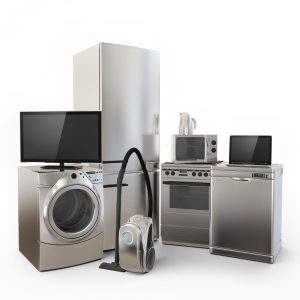Blog
The Energy Guide Label on Appliances, What Does It Mean?
Today, more than ever, consumers are just as concerned about being ecologically responsible as they are in being economically smart.

When it comes to appliances in your home, the Department of Energy has given you a heads start in your search for the most eco-friendly device.
They’re called “EnergyGuide” labels, and you’ve probably seen them affixed to new appliances in bright yellow squares, but may not have realized what their role is.
The sole purpose of the label is to help you better understand the appliance you’re purchasing. Most importantly, to help you understand the hidden costs of the power drain associated with its use.
Similar to the nutrition facts on food items, these labels are power facts for appliances. Included on the label is all of the information you may need in deciding if the machine truly meets your needs as well as your expectations for power costs.
The label includes necessary information on the appliance such as the type, manufacturer, and capacity of the unit. Most of these smaller print items are relatively self-explanatory.
Where most people begin to become confused is trying to understand the actual energy cost which is listed as a range based on all similar models of the appliance. If a device costs $40 per year and similar appliances use between $20 and $60 in energy per year, then that particular model should be in the exact middle of the range.
Keep in mind that when the calculations made for the energy cost, the manufacturer has no way of knowing your real energy use. That amount can vary quite substantially based on your location and the actual amount of use. (Generally speaking, it is less expensive to run a machine later in the evening during off-peak energy hours)
If you want to calculate the energy cost yourself for the most actual savings, here is a method:
- Look at your current power bill and note the actual cost per kilowatt hour of power. (Ex. 0.10 per kWh)
- Locate the “Estimated Yearly Electricity Use” box on the EnergyGuide label. (Ex. 400Wh)
Now multiply the number of estimated kilowatts by the actual amount charged per kilowatt.
In the example, we would need 400 kWh x 0.10 per kWh to generate a real charge of $40 per year for our new appliance.



